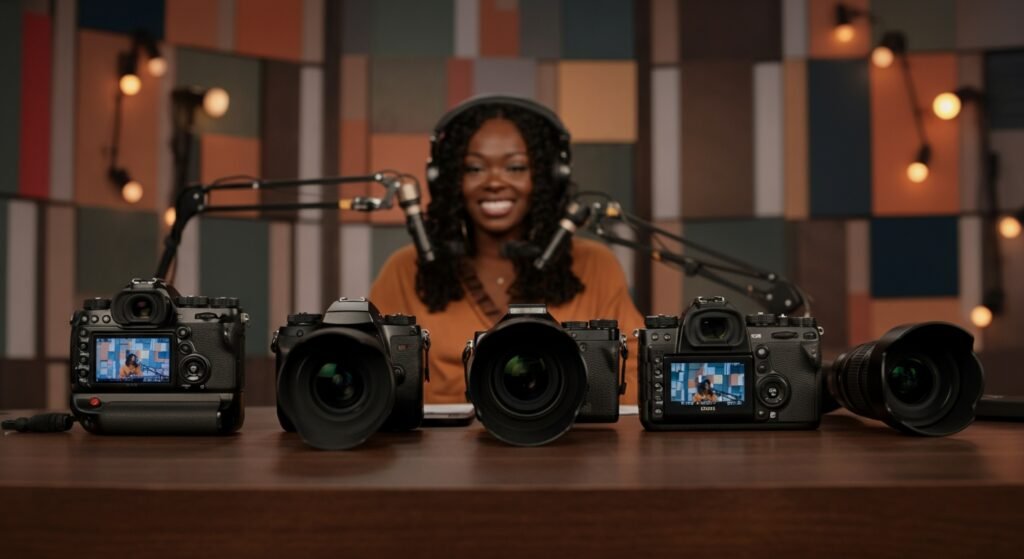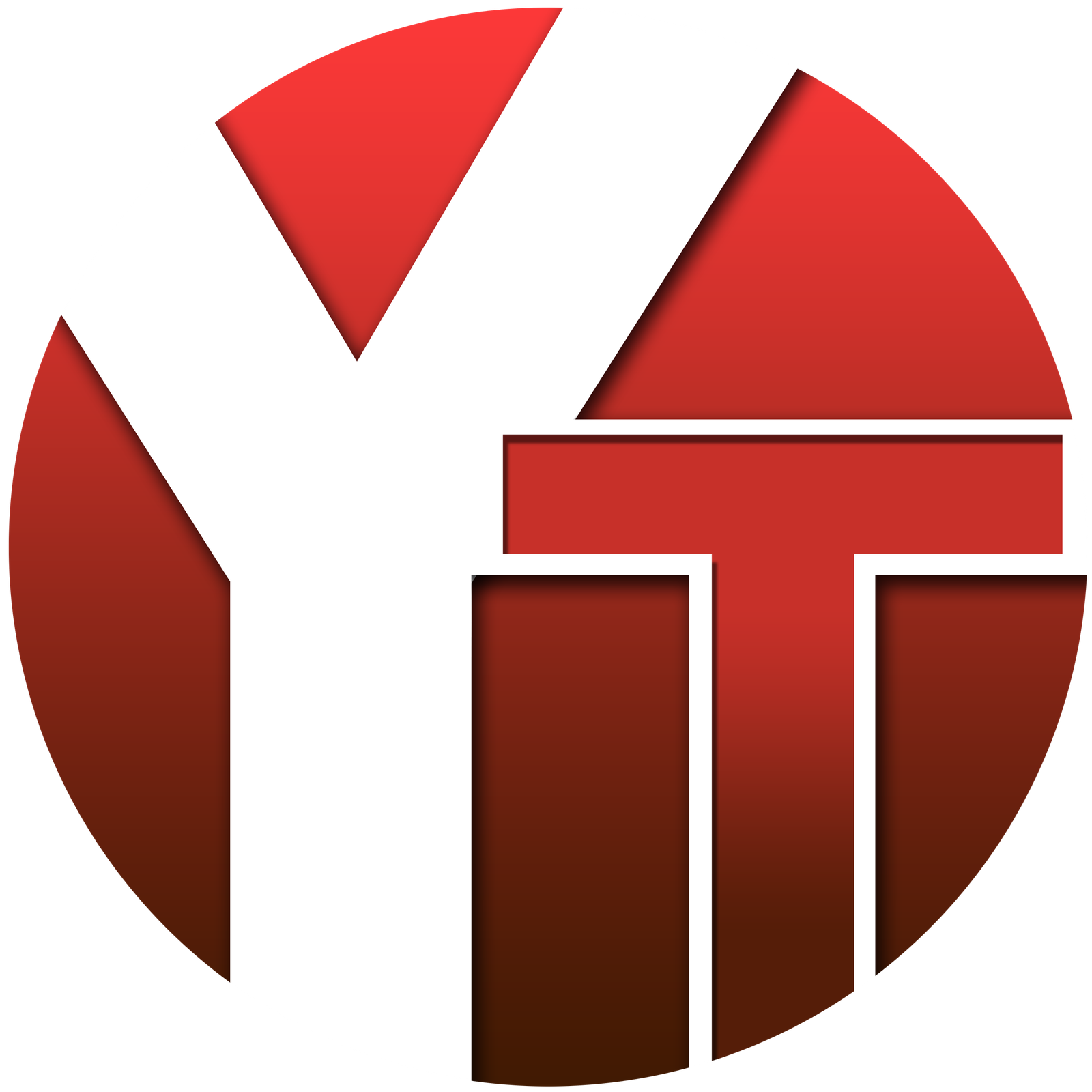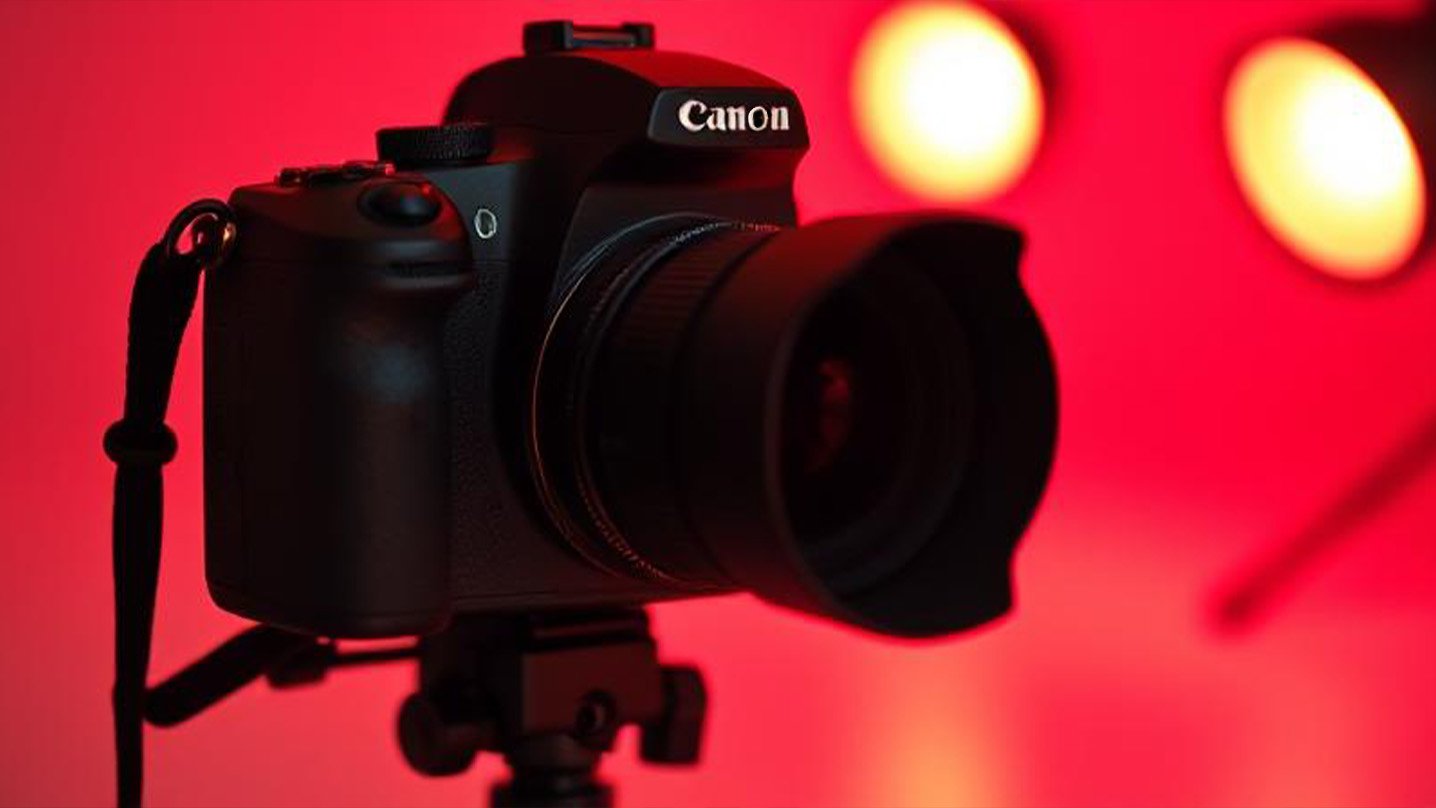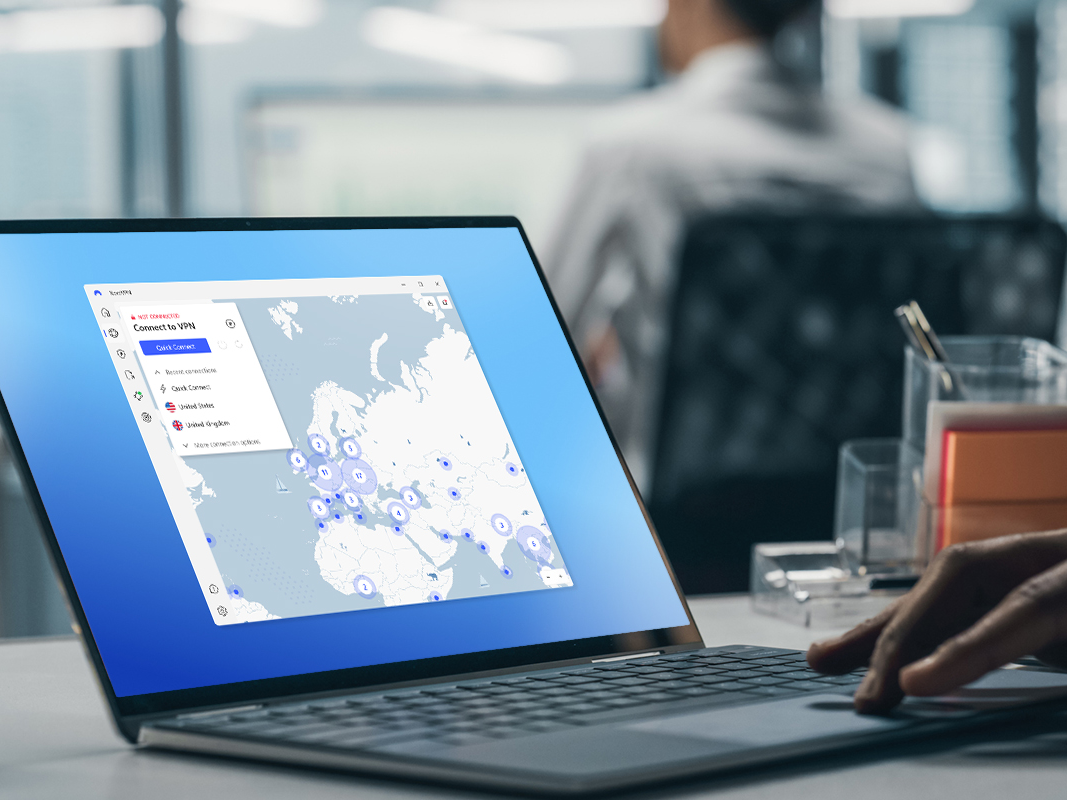While audio remains the foundation of any podcast, the rise of video podcasts, live streams, and visual content has made cameras an increasingly crucial component for many creators. A good camera can elevate your podcast from an audio-only experience to a dynamic visual story, engaging your audience on platforms like YouTube, Twitch, and social media.
Whether you’re looking to add a simple webcam for face-to-face interviews or invest in a professional setup for cinematic quality, this guide will help you navigate the best cameras for podcasting in 2025, covering different types, key features, and top recommendations for every budget.
If you’re in need of a mic, check out my recommendatons for the best microphones for podcasting as well.

Why a Camera Matters for Podcasting
For many podcasters, adding a visual element can:
- Increase Engagement: Visuals can capture attention and keep viewers hooked, especially for long-form content.
- Build Connection: Seeing faces and expressions helps build a stronger, more personal connection with your audience.
- Expand Reach: Video content opens up new platforms and audiences beyond traditional audio directories.
- Enhance Storytelling: Visual aids, demonstrations, and varied shots can enrich your narrative.
- Professionalism: High-quality video signals a commitment to production value.
Types of Cameras for Podcasting:
Understanding the different camera types will help you choose the best fit for your podcasting needs:
1. Webcams
- Simplicity: Plug-and-play via USB, extremely easy to set up.
- Affordability: Generally the most budget-friendly option.
- Convenience: Compact, often clip directly onto monitors.
- Limitations: Fixed lenses, smaller sensors (less ideal in low light), limited manual controls, often lower resolution compared to dedicated cameras.
2. Mirrorless Cameras
- Versatility: Offer interchangeable lenses for different looks (wide-angle, shallow depth of field).
- Image Quality: Larger sensors (APS-C or Full-Frame) deliver excellent video quality, especially in low light.
- Autofocus: Advanced autofocus systems are crucial for keeping subjects sharp.
- Flexibility: Strong manual controls for exposure, color, and more.
- Considerations: Can be more expensive, require additional lenses, and may have overheating issues during long recording sessions (though newer models are much improved).
3. DSLRs
- Robustness: Generally durable and have good battery life.
- Image Quality: Large sensors (APS-C or Full-Frame) provide excellent video quality.
- Interchangeable Lenses: Access to a vast array of lenses.
- Considerations: Often bulkier and heavier than mirrorless cameras, video autofocus can be slower, and many lack advanced video features found in mirrorless counterparts.
4. Dedicated Vlogging Cameras (e.g., Sony ZV series, Canon PowerShot V series)
- Vlogger-Friendly Features: Often include vari-angle screens, product showcase modes, clear audio inputs, and compact designs.
- Ease of Use: Designed for quick, intuitive video capture.
- Good Auto Modes: Excellent for those who don’t want to dive deep into manual settings.
- Considerations: May have limitations for advanced cinematic production, sometimes fixed lenses.
5. Smartphones
- Accessibility: Most people already own one.
- Portability: Extremely compact and always with you.
- Convenience: Easy to share directly to social media.
- Limitations: Smaller sensors (struggle in low light), limited manual controls (without third-party apps), audio quality often requires external mics, can overheat.
Top Picks for Best Podcasting Cameras 2025:
Best Overall & Versatile (Mirrorless):
Sony Alpha 7 IV (α7 IV):
- 33MP full-frame Exmor R back-illuminated CMOS sensor.Operating temperature : 0 to 40 °C (32 to 104 °F), Rated input : 10…
- 8x more powerful, next generation BIONZ XR image processing engine
- Up to 4K 60p 10-bit 4:2:2 w/ full pixel readout in all recording formats
- Why it’s great: A true hybrid powerhouse, offering a 33MP full-frame sensor for stunning 4K 60p video (with a crop) and excellent stills. Its advanced autofocus with real-time tracking is superb for keeping subjects sharp, and its robust build ensures reliability.
- Considerations: Higher price point, 4K 60p has a crop.
Canon EOS R6 Mark II:
- FULL-FRAME CMOS SENSOR: 24.2 effective megapixels (approx.) lets you capture sharp, detailed images even in low-light co…
- DIGIC X IMAGE PROCESSOR: Enhances digital camera performance and processes, including image stabilization, image process…
- HIGH-SPEED CONTINUOUS SHOOTING: Electronic shutter speeds of up to 40 fps at 20MP let you capture dynamic action shots o…
- Why it’s great: Delivers fantastic 4K 60p video (oversampled from 6K) with excellent low-light performance from its 24.2MP full-frame sensor. It has Canon’s renowned color science and user-friendly interface, making it a joy to operate for video.
- Considerations: Still a significant investment.
Best USB Webcams (Simplicity & Quality):
Logitech Brio Ultra 4K Stream Edition:
- Compatible with Nintendo Switch 2 Console
- Ultra HD 4K webcam: meet or stream in 4K resolution at 30fps or 1080p at 60fps, with our most advanced webcam sensor yet…
- AI-enhanced image quality: Experience 2x better face visibility with finer image details in difficult light (2), with au…
- Why it’s great: Offers true 4K resolution, excellent image quality, and good low-light performance for a webcam. It’s a reliable choice for professional-looking video calls and streams.
- Considerations: Still a webcam, so it won’t match the depth of field or low-light capabilities of larger-sensor cameras.
Razer Kiyo Pro Ultra:
- DSLR LIKE 4K QUALITY — Featuring a bigger sensor with a 2.9 μm pixel size, the Kiyo Pro Ultra with 1/1.2″ Sony STARVIS 2…
- CLARITY IN ANY LIGHT — To maximize the sensor’s full potential, the webcam is fitted with a custom F/1.7 Aperture Lens t…
- AI POWERED VIDEO IMAGING — Always stay sharp and well-lit with a webcam that’s not only capable of tracking the face and…
- Why it’s great: Designed for streamers, it features an adaptive light sensor for great performance in various lighting conditions. It offers uncompressed 1080p 60fps video and a wide-angle lens.
- Considerations: Can be pricey for a webcam.
Best Vlogging & Compact Cameras:
Sony ZV-E1:
- Full-frame 12.1MP Exmor R sensor, optimized for 4K, sensitivity and speed
- 10-bit 4:2:2 recording with direct pixel readout, Long GOP or All Intra formats
- Create memorable imagery with ease with Cinematic Vlog Setting
- Why it’s great: A full-frame vlogging camera that packs the video power of the Alpha 7S III into a compact body. It excels in low light and offers advanced video features like cinematic vlog mode and AI-assisted auto-framing.
- Considerations: High price point, no viewfinder.
Canon PowerShot V10:
- Compact Powerhouse: Canon PowerShot V10 vlogging camera features a sleek, pocket-sized design; perfect for on-the-go cre…
- Versatile Vlogging Camera: Incredible low-light capabilities with a 15.2-megapixel 1-inch back-illuminated CMOS sensor; …
- Adaptable Built-In Stand: Comes with an innovative stand that folds in both the front or back; content creator camera wi…
- Why it’s great: An ultra-compact, all-in-one 4K vlogging camera designed for ease of use. It features a built-in stand, high-quality stereo microphones, and a flip-up screen, making it perfect for on-the-go content creation.
- Considerations: Fixed lens, limited advanced controls.
Key Features to Look for in a Podcasting Camera:
- Resolution & Frame Rate: Aim for at least 1080p (Full HD) at 30fps. 4K offers more detail and flexibility for cropping in post-production. Higher frame rates (e.g., 60fps, 120fps) allow for smoother motion or slow-motion effects.
- Low-Light Performance: A larger sensor (Full-Frame > APS-C > 1-inch > webcam) generally means better performance in dim lighting.
- Autofocus (AF): Fast, reliable autofocus with subject tracking (especially face/eye detection) is crucial to keep you sharp as you move.
- Connectivity: USB for webcams, HDMI for connecting mirrorless/DSLRs to capture cards for live streaming or recording. Wi-Fi for easy file transfer.
- Lens Options (for interchangeable lens cameras): Consider the focal length (wide-angle for multiple hosts, prime lenses for shallow depth of field) and aperture (lower f-number for better low light and background blur).
- Overheating: For long recording sessions, check reviews for any overheating issues, especially with 4K video.
- Audio Input: A dedicated microphone input (3.5mm jack or XLR via adapter) is essential for connecting external microphones for superior audio.
- Form Factor & Ergonomics: Consider portability, ease of setup, and whether it fits your recording space.
- Clean HDMI Output: Important for streaming or recording directly to an external recorder without on-screen overlays.
Conclusion
Choosing the best camera for your podcast depends heavily on your specific needs, budget, and the kind of visual content you aim to create. From simple, effective webcams to versatile mirrorless powerhouses, the options in 2024-2025 are more robust and accessible than ever.
By prioritizing features like resolution, low-light performance, and reliable autofocus, you can select a camera that not only meets your current demands but also helps your podcast visually stand out and connect more deeply with your audience.









No responses yet